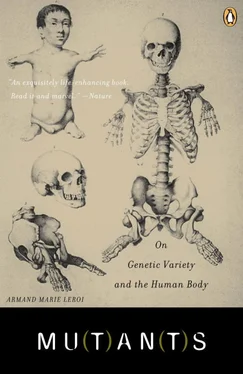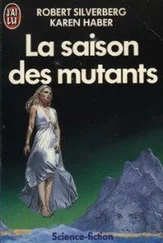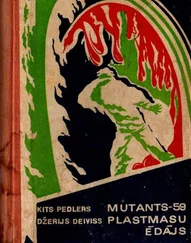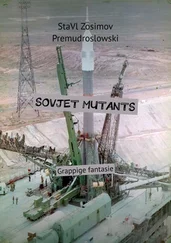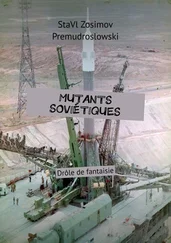The ability of disparate organ primordia to find each other and fuse to form wholes is one of the marvels of embryogenesis. Underlying it are thousands of different molecules that are attached to the surface of cells and are, as it were, signals of their affiliation, that permit other cells to recognise them as being of like kind. These are the cell-adhesion molecules; molecular biologists speak of them as the Velcro of the body: weak individually, but collectively strong. Even so, the fusion of organ primordia is a delicate business. Neural tube fusion is particularly prone to failure. One infant in a thousand born has a neural tube that is at least partly open – a condition called spina bifida. At its most severe the neural tube in the future head fails to close. The exposed neural tissue becomes necrotic and collapses, leaving a child that has the remnant of a brain stem but in which the back of the head has been truncated, as if sliced with a cleaver.
Such anencephalic infants, as they are known, occur in about 1 in 1500 births; they have heavy-lidded eyes that seem to bulge from their heads and their tongues stick out of their mouths. They die within a few days, if not hours, of being born. As the name suggests, spina bifida is often not just a failure of the neural tube to close, but a failure in the closure of the vertebral column so that instead of being sheltered by bone the nerve cord lies exposed. It is not the only organ prone to this sort of defect. Sometimes the primordia of the heart fail to meet; the result is cardiac bifida, two hearts, each only half of what it should be.
The power of cell–cell adhesion to mould the developing body is startling. In his monograph on Ritta and Christina, Serres describes a pair of stillborn boys who are joined at the head. Oriented belly to belly, their faces are deflected ninety degrees relative to their torsos so that they gaze, Janus-like, in opposite directions. What is remarkable about these children is that each apparent face is composed of half of one child’s face fused to the opposite half of his brother’s. The developing noses, lips, jaws and brains of these two children have found each other and fused perfectly – twice.
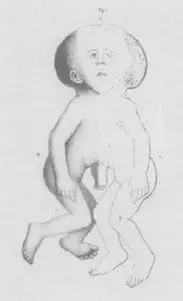
CONJOINED TWINS: CEPHALOTHORACOILEOPAGUS. FROM ÉTIENNE SERRES 1832 RECHERCHES D’ANATOMIE TRANSCENDANTE ET PATHOLOGIQUE.
The diversity of ways in which conjoined twins can be attached to each other seems to depend on the position of the developing embryonic discs relative to each other as they float on their common yolk sac and when they contact. The embryonic discs that gave rise to Ritta and Christina were side by side, and fused some time after closure of the vertebral column but before formation of the lower gut. In the case of the twins with fused faces the embryonic discs were head to head. The most extreme form of conjoined twinning is ‘parapagus diprosopus’, in which the fusion is so intimate that the only external evidence of twinning is a partly duplicated spinal column, an extra nose and, sometimes, a third eye. At this point all debates over individuality become moot.
Conjoined twins grade into parasites, infants that live at the expense of their siblings. The distinction is a matter of asymmetry. When the young Italian Lazarus Colloredo toured Europe in the 1630s he was celebrated for his charm and breeding even as his brother, John Baptista, dangled insensibly from his sternum. In the late 1800s an Indian boy, Laloo, displayed his parasite, a nameless, headless abdomen with arms, legs and genitals, in the United States. In 1982, a thirty-five-year-old Chinese man was reported with a parasitic head embedded in the right side of his own head. The extra head had a small brain, two weak eyes, two eyebrows, a nose, twelve teeth, a tongue and lots of hair. When the main head pursed its lips, stuck out its tongue or blinked its eyelids, so did the parasitic head; when the main head ate, the parasite drooled. Neurosurgeons removed it. Certain parts of the developing body seem especially vulnerable to parasitism, among them the neural tube, sternum and mouth. Some forty cases have been described of children who have dwarfed and deformed parasites growing from their palates. And parasites may themselves be parasitised. In 1860 a child was born in Durango, Mexico, who had a parasite growing from his mouth to which two others were attached.
Teratomas may be an even more intimate form of parasitism. These are disordered lumps of tissue that are usually mistaken initially for benign tumors, but that after surgery turn out to be compacted masses of differentiated tissue, hair, teeth, bone and skin. They have been traditionally blamed on errant germ cells. Unlike most of the body’s cells, germ cells have the potential to become any other cell type, and it is supposed that occasionally a germ cell that has wandered into the abdomen will, perhaps by mutation, start developing spontaneously into a disordered simulacrum of a child. It is now suspected that some teratomas are, in fact, twins that have become fully enclosed within a larger sibling, a condition known trenchantly as ‘ foetus in foetu’ . A Dutch child born in 1995 had the remains of twenty-one foetuses (as determined by a leg count) embedded in its brain.
There is one more thing that Ritta and Christina can tell us, and that is how we come to have a left and a right. We tend to think of ourselves as symmetrical creatures and, viewed externally, so we are. To be sure, our right biceps may be more developed than their cognates on the left ( vice versa for the left-handed minority), and none of us has perfectly matched limbs, eyes or ears, but these are small deviations from an essential symmetry. Internally, however, we are no more symmetrical than snails. The pumping ventricles of our hearts protrude to the left sides of our bodies. Also on the left are the arch of the aorta, the thoracic duct, the stomach and the spleen, while the vena cava, gall bladder and most of the liver are on the right. Christina’s viscera were arranged much as they are in any of us (except for her liver, which was fused with Ritta’s). Ritta’s viscera, however, were not. They were the mirror-image of her sister’s.
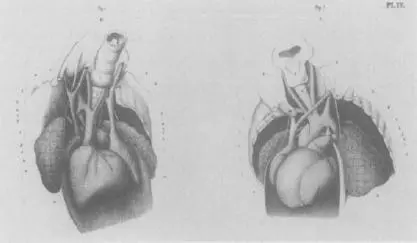
CONJOINED TWINS: SITUS INVERSUS VISCERA. RITTA AND CHRISTINA PARODI. FROM ÉTIENNE SERRES 1832 RECHERCHES D’ANATOMIE TRANSCENDANTE ET PATHOLOGIQUE.
This condition, known as situs inversus, literally ‘position inverted’, is common in conjoined twins, as it is rare in the rest of us (who are situs solitus). Not all conjoined twins are situs inversus, but only those that are fused side to side (rather than head to head or hip to hip). Even among side-to-side twins situs inversus is only ever found in the right-side twin – ‘right’ referring to the twins themselves not the observer’s view of them – and then only in 50 per cent of them. This last statistic is intriguing, for it implies that the orientation of the viscera is randomised in right-side twins. It is as if nature, when arranging their internal organs, abandons the determinism that rules the rest of us, and instead flips a coin marked ‘left’ or ‘right’.
In recent years, much has been learned about why our internal organs are oriented the way they are. One source of information comes from those rare people – the best estimates put them at a frequency of 1 in 8500 – who, despite being born without a twin, have internal organs arranged the wrong way round. The most famous historical case of singleton situs inversus was an old soldier who died at Les Invalides in 1688. Obscure in life – just one of the thousands who, at the command of Louis XIV, had marched across Flanders, besieged Valenciennes and crossed the Rhine to chasten German princelings – he achieved fame in death when surgeons opened his chest and found his heart on the right. In the 1600s Parisians wrote doggerel about him; in the 1700s he featured in the querelle des monstres debate; in the 1800s he became an example of ‘developmental arrest’, the fashionable theory of the day. Were he to appear on an autopsy slab today, he would hardly be famous, but would simply be diagnosed as having a congenital disorder called ‘Kartagener’s syndrome’.
Читать дальше
